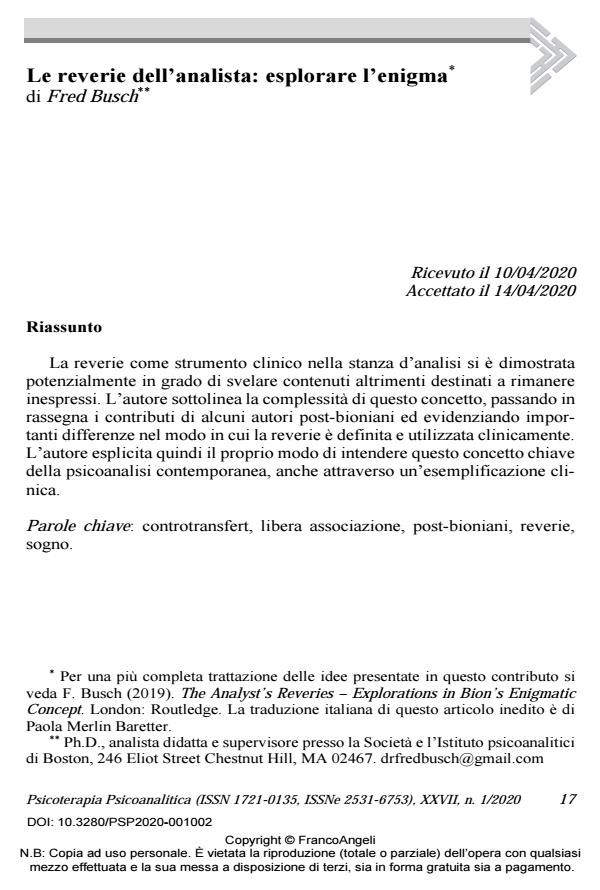Le reverie dell’analista: esplorare l’enigma
Titolo Rivista PSICOTERAPIA PSICOANALITICA
Autori/Curatori Fred Busch
Anno di pubblicazione 2020 Fascicolo 2020/1
Lingua Italiano Numero pagine 22 P. 17-38 Dimensione file 221 KB
DOI 10.3280/PSP2020-001002
Il DOI è il codice a barre della proprietà intellettuale: per saperne di più
clicca qui
Qui sotto puoi vedere in anteprima la prima pagina di questo articolo.
Se questo articolo ti interessa, lo puoi acquistare (e scaricare in formato pdf) seguendo le facili indicazioni per acquistare il download credit. Acquista Download Credits per scaricare questo Articolo in formato PDF

FrancoAngeli è membro della Publishers International Linking Association, Inc (PILA)associazione indipendente e non profit per facilitare (attraverso i servizi tecnologici implementati da CrossRef.org) l’accesso degli studiosi ai contenuti digitali nelle pubblicazioni professionali e scientifiche
La reverie come strumento clinico nella stanza d’analisi si è dimostrata potenzialmente in grado di svelare contenuti altrimenti destinati a rimanere inespressi. L’autore sottolinea la complessità di questo concetto, passando in rassegna i contributi di alcuni autori post-bioniani ed evidenziando importanti differenze nel modo in cui la reverie è defini-ta e utilizzata clinicamente. L’autore esplicita quindi il proprio modo di intendere questo concetto chiave della psicoanalisi contemporanea, an-che attraverso un’esemplificazione clinica.
Parole chiave:Controtransfert, libera associazione, post-bioniani, reve-rie, sogno.
Fred Busch, Le reverie dell’analista: esplorare l’enigma in "PSICOTERAPIA PSICOANALITICA" 1/2020, pp 17-38, DOI: 10.3280/PSP2020-001002